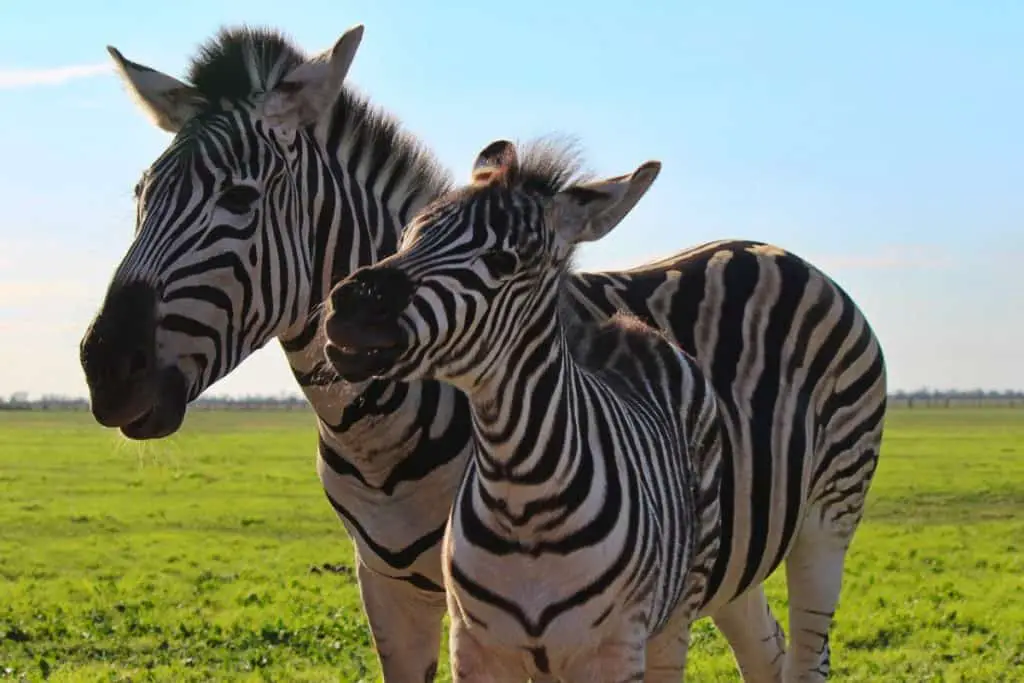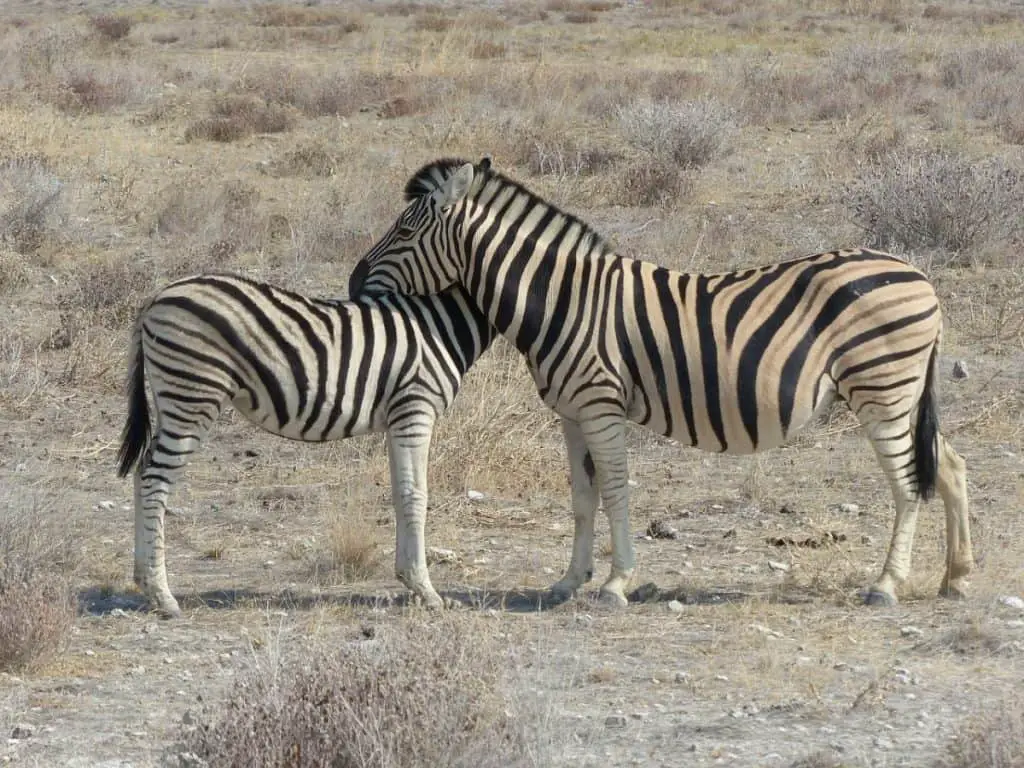The animal kingdom is incredible, and it impresses us every day. On the other hand, it also has some bizarre rules too. It’s amazing to see just how some animals would do to protect their younglings, and zebras are no exception. However, at the other end of the spectrum, they can also commit one of the most heinous crimes, infanticide, killing the young of their species.
Stallions kill male foals when taking over harems to ensure that they can breed and pass on their genes to the next generation. Males left alive can be a potential threat in the future to the stallion and his harem. A female without a foal will enter oestrus, allowing the stallion to mate with them.
This is a strange and cruel subject for us to understand, and it happens commonly in the animal world. Please read on to find out more.
Zebras are social animals. Find out more in this article I wrote

Why do adult zebras kill foals?
Although adult zebras sometimes kill zebra foals, it is essential to note that this happens only to male zebras. Foals are only ever killed by adult males and not by females. Adults kill male foals if they are not their offspring, as they want their foals to carry on their genetics. Unfortunately, any male foal that is not theirs will not allow them to forward their legacy.
Stallions see male foals as potential rivals. Adult males want to assert their claim over females and show they are the dominant male in the herd. Although a gruesome act, adult male zebras need to establish their dominance.
Male stallions will steal females from other adult males. If the female is pregnant, the stallion will usually do whatever he can to make her abort the pregnancy. If the female gives birth to a foal from a previous male, the foal will be attacked and killed by the male.
Males will also continue to try and impregnate a pregnant female. This affects the female releasing hormones, which leads to the body re-absorbing the partly grown fetus.
If a male zebra breeds, he has genes that give him advantages over other males. As they breed, they produce offspring that will pass on their genes and help the next generation succeed in breeding. Stallions with lots of offspring ensure that their genes are present in future generations. Genes decide behaviour and personalities as well as looks.
Do you know how good a zebra’s senses are? Find out here
Only the strongest survive
Zebra stallions will ensure that they are seen as dominant to breed and often fight to the death to show this. Any weakness can lead to other stallions trying to assert themselves and stealing their females.
Male zebras will try to kill all male foals with the idea of eliminating any traces of the predecessor. This ensures that the most robust genetics get passed forward to future generations, which also helps protect the species’ future.
Is it normal for zebras to kill foals?
Once a stallion takes over a harem of mares, he will ensure that all male babies are killed. This allows him to be sure that no other males in the group will challenge him as he gets older. Unfortunately, they may also kill their foals after taking over another herd. However, as awful as that sounds, this ensures the next set of foals produced will be his.
Stallions don’t always know if the foal is theirs or not. Once they have taken over another herd, they will kill the foals and mate with the females. As they never had any interaction, they know those foals are not theirs.
Zebras will kill their young, and they are not the only animals that do this. Lions are well known to commit infanticide, but also meerkats, some species of bats, and sea lions are just some of the animals that will also carry this out.
Infanticide will continue to be a natural behaviour in the animal kingdom. Like we have our society and rules, zebras have their own too. Stallions are constantly pressured to show off their dominance, and if they don’t, that will cause trouble for them later on.
Do you know where zebras live? Find out here
Should we interfere?
As cruel as it may seem, these are natural rules within the animal kingdom. Some animals have evolved and survived because this is how they have been living for many centuries.
It’s very different from what you would encounter in the human world, but it’s interesting animal behaviour.

The social structure of zebras
Zebras are grouped in harems. There is a single, dominant male in the harem, and he will have up to 6 females in their group.
Younger males are not able to join the harem. They can try to create their own or join bachelor herds where multiple stallions are grouped until they are large enough and old enough to challenge rivals.
Stallions will fight other males for females, and it is even possible for them to steal females from one another. When stallions fight, it is pretty common to see these encounters end up with the death of one stallion.
Stallions battle each other by biting their legs and necks and using their legs and hooves to kick. Zebra fights can last for hours. Stallions will fight as long as it takes to show their dominance.
Their fights say a lot about their resilience and focus on showing dominance. After most battles, they will be severely bruised, damaged, and bloody. These battles are essential to their society and structure since they indicate who is dominant and deserves to have their harem.
Do you know how good a zebra’s senses are? Find out here
Conclusion
The animal world is filled with wonders and cruelty. Although killing our young is completely alien to us, infanticide ensures that the most potent genetics get through to future generations and ensure the species’ future.
Infanticide in zebras is about evolution and one reason these animals have managed to thrive and evolve for centuries. It is a classic case of how the strongest survive.
While it is a gruesome act, stallions consider this necessary to further their legacy. Although it is difficult for us to understand, humans should never interfere. This is a part of the natural world, and if we want to keep animals around for as long as possible, we have to let nature play its role.

